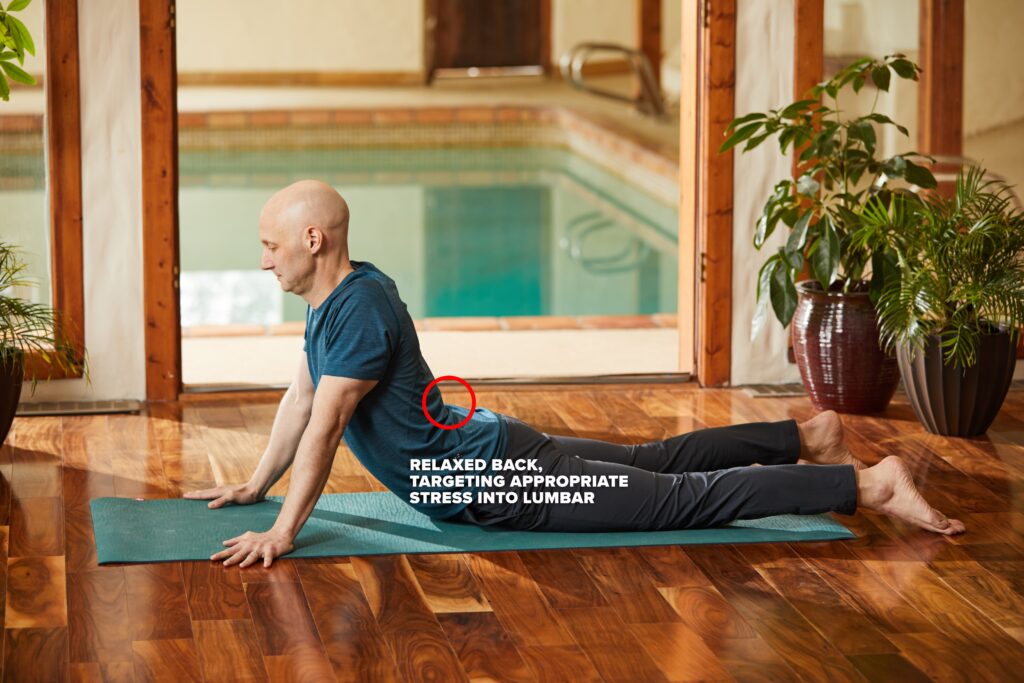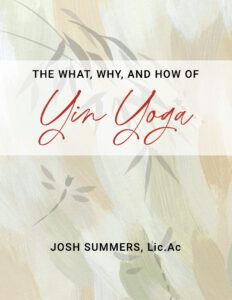Have you noticed that the names of Yin Yoga poses are different than what you’ve heard in other yoga classes? Or have you wondered why Yin poses aren’t named in Sanskrit? Hatha Yoga often involves engaging muscles in a yang (active) way. Yin poses have unique names to signal to practitioners that the postures are meant to be inhabited in a yin (relaxed) way. There’s a good reason for this, and it has to do with the physical focus of each type of practice.
Yang postures emphasize contracting, strengthening, and stretching the body’s muscles, as well as the fascia around and within those muscles. Engaging the muscles when you’re moving dynamically – as in vinyasa yoga, for example – protects the joints. When muscles are engaged, the joints don’t get stressed significantly. This is a good thing in an active practice because repetitive stress to the joints can weaken or injure joint tissue.
In contrast, Yin postures emphasize gently stressing the dense connective tissues (ligaments, discs, cartilage, and joint capsules) in and around the joints in order to strengthen those tissues. You accomplish this by pulling (tensile stress), squeezing (compressive stress), or twisting them. Because the muscles are relaxed in Yin poses, they aren’t the layer of body that is strengthened. In sum, our focus – or functional intention – can translate either to a yang or yin version of a pose, and this has a lot to do with how you are trying to feel things in your body.
To understand the differences between a yang and a yin approach to the same pose, let’s consider the common cues and benefits of Yang Yoga’s Cobra Pose (Bhujangasana) and Yin Yoga’s Seal Pose.
Cobra Pose (Bhujangasana)
Common cues associated with Cobra: Lift the chest and draw it forward. Drop your shoulders from your ears, and pull them back by isometrically drawing your hands toward your hips. Engage the erector spinae muscles. Lengthen out of your lower back. Don’t sink into your lumbar or compress your lower back!
Benefits derived from a yang functional intention: Strengthens the back muscles through spinal extension. Strengthens the shoulders and triceps through sustaining the pose.

Seal Pose
Common cues associated with Seal Pose: Walk your hands somewhere in front of your torso. Fully extend your arms so that you can let your arm muscles relax and allow your arm bones to support you. Your shoulders may shrug, and that’s fine. Relax your abdomen and the erector spinae muscles. Allow your lumbar to gently compress so you feel mild-to-moderate sensation, and monitor the intensity of that sensation – if it becomes too intense, sharp, or aggressive, lower to your forearms and come to Sphinx Pose.
No matter which range of motion you assume, your manner of inhabiting the pose – muscles relaxed – is vital so that the joint tissue can soak in the all-important dose of mild stress that will keep it strong and supple for years to come.
Benefits derived from a yin functional intention: Strengthens the lumbar spine’s discs, bones, and connective tissues through compressive stress. Possibly strengthens the connective tissue of the shoulders. Gently stretches the abdomen with tensile stress.
So, Is It Safe to Compress the Spine?
The final cue offered (“allow your lumbar to gently compress”) may raise safety concerns. In all intelligent yang forms of yoga, you are discouraged from compressing the back because – in those contexts – compression may be too aggressive and damaging. But just because you don’t want to compress the lumbar in a yang context doesn’t mean you shouldn’t ever compress it. All tissues need appropriate levels of stress so that they don’t weaken or atrophy.
Please remember that yang and yin kinds of exercise are equally important: Your muscles need yang stresses to stay strong and healthy, and your joints’ dense connective tissues need yin stresses to stay strong and healthy. A yogi who intelligently combines both is well on his or her way to cultivating a strong body on all levels.
—
Next up in the series, we’ll look at how Functional Alignment helps prevent injury in Yin Yoga.
Practice Opportunities:

